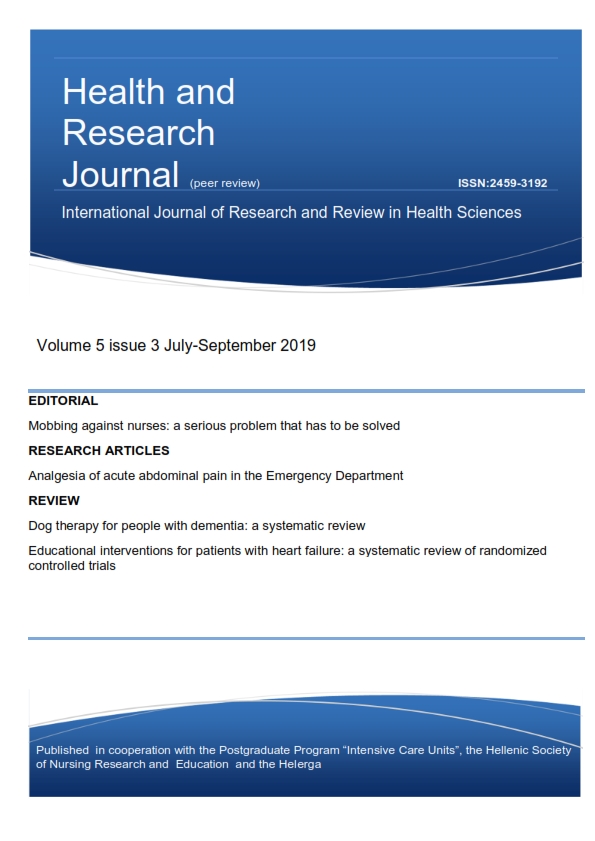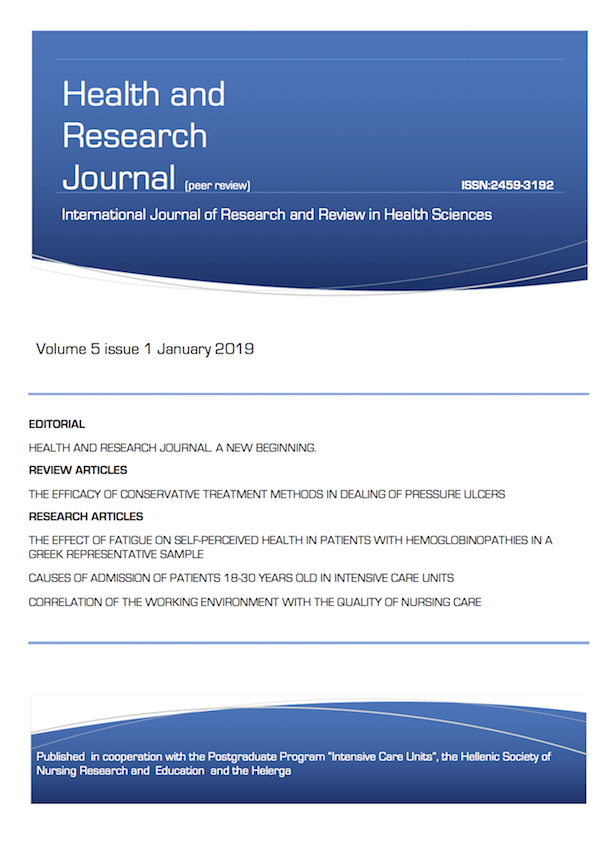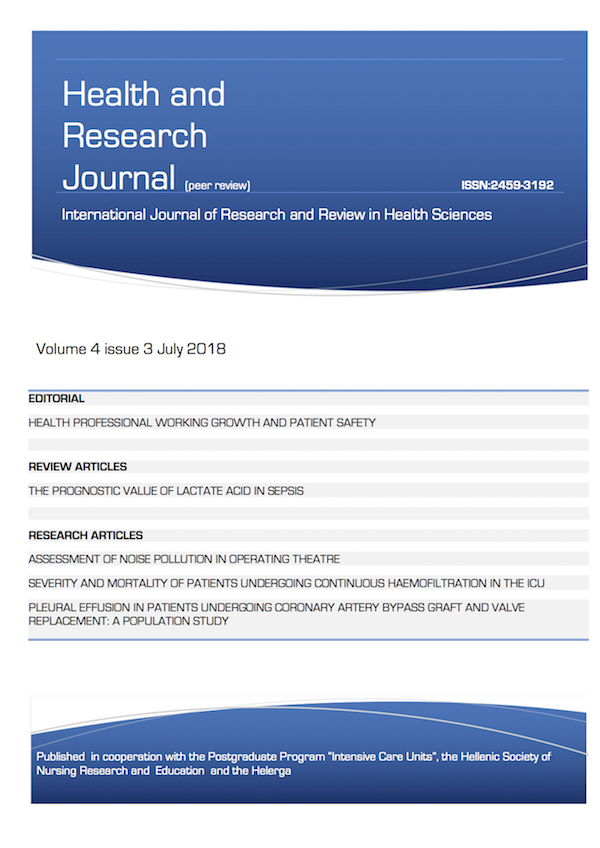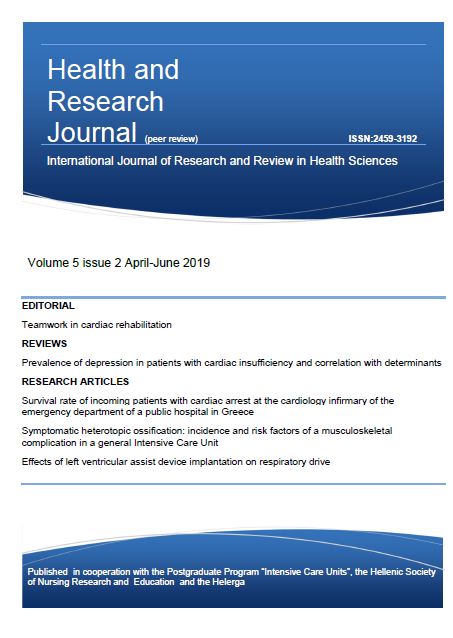The effect of percutaneous and surgical tracheotomy on thyroid hormones levels
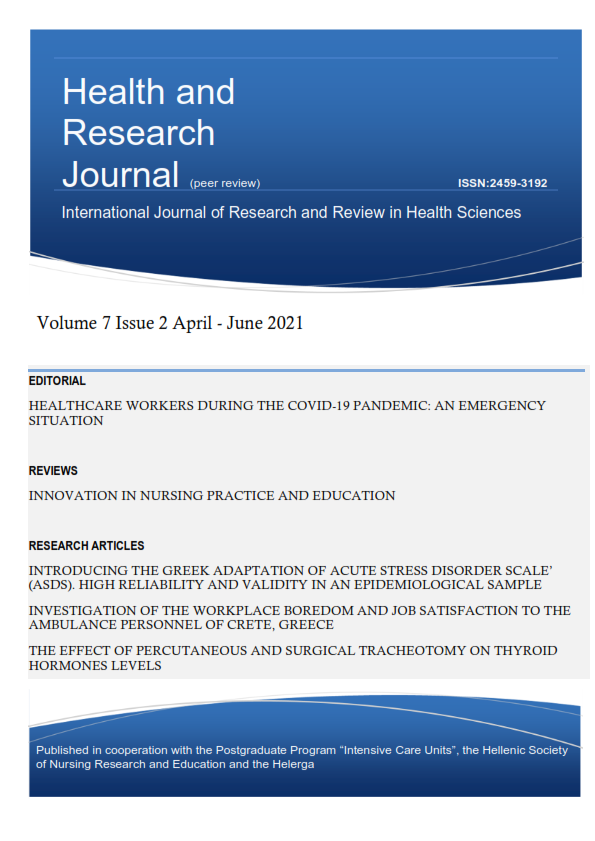
Abstract
Background: The need for prolonged mechanical ventilation is one of the most serious cases of a disease in patients in intensive care units. Tracheostomy is often considered as a solution when mechanical ventilation is expected to be used for prolonged periods or for improvement of the respiratory state as this approach provides protection of the airways, facilitates access to remove secretions, improves patient convenience and promotes the development of care inside and outside the Intensive Care Unit (ICU).
Aim: The aim of the present study was to evaluate the impact of surgical and percutaneous tracheotomy on thyroid hormones and to compare them.
Material & Methods: This is a non-randomized clinical trial. The studied sample consisted of 87 patients from the Intensive Care Unit of a General Hospital of Athens who underwent percutaneous or surgical tracheotomy.
Results: Thyroid-stimulating hormone levels were increased in surgical group compared to percutaneous group at 2 hours post procedure but the difference was not found statistically significant. The rise in post-operative levels of fT3 compared to preoperative was found statistically significant for surgical tracheostomy group. Elevated fT4 levels were found in both groups.
Conclusions: The effect of surgical versus percutaneous tracheostomy on thyroid hormone was analyzed and it was found that both procedures may affect the level of thyroid hormones, being significant in the surgical group.
Article Details
- How to Cite
-
Sampani, C., Kalemikerakis, I., Kalogianni, A., & Papageorgiou, D. (2021). The effect of percutaneous and surgical tracheotomy on thyroid hormones levels. Health & Research Journal, 7(2), 85–93. https://doi.org/10.12681/healthresj.26809
- Section
- Original Articles
Copyright notice:
The journal "Health and Research Journal" reserves the rights for copyright of the content of the website and also the copyright of the articles published.
By virtue of their appearance in this journal, the articles are free to be used for non-commercial purposes. However, the articles cannot and must not be used in anyway, published elsewhere or modified without any reference to the author and the first publication of the article.



